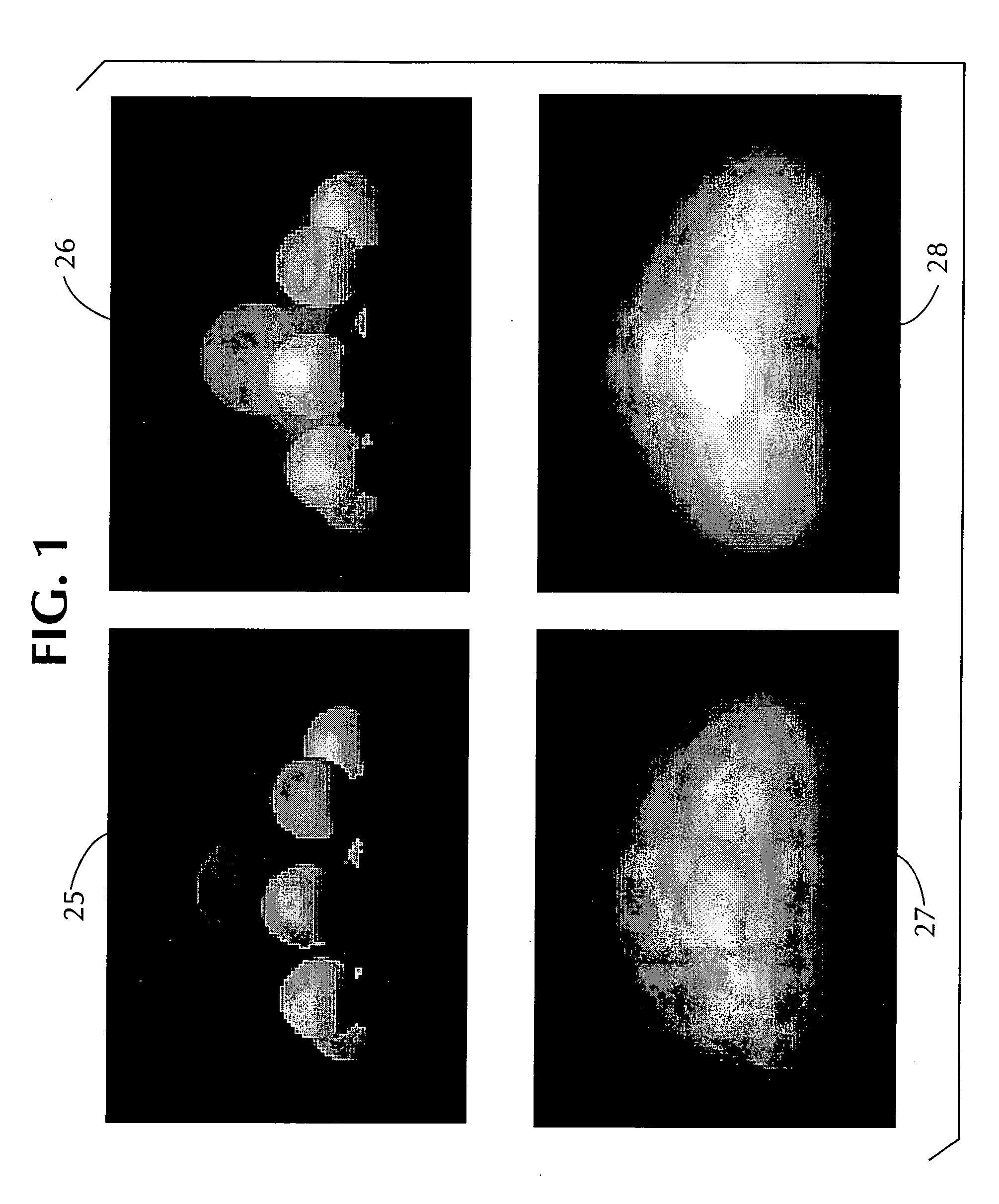Systems and methods for modeling the impact of a medium on the appearances of encompassed light sources
a technology of encompassed light and modeling methods, applied in the field of systems and methods that model the impact of a medium on the appearance of encompassed light sources, can solve problems such as life-threatening, airline pilots' inability to see, and problems with machines
- Summary
- Abstract
- Description
- Claims
- Application Information
AI Technical Summary
Benefits of technology
Problems solved by technology
Method used
Image
Examples
Embodiment Construction
Turning first to FIG. 1, an example of a street lamp in four different atmospheric conditions is illustrated in images 25, 26, 27, and 28. As can be seen, in the first image 25, no glow surrounds the individual globes of the street lamp. This is the case because the weather as shown in the image is clear. In image 26, however, it is apparent that the street lamp is now encompassed by mild fog and a slight glow appears around the individual globes of the lamp. Next, in image 27, the individual globes of the street lamp are all but obscured by the dense mist that now encompasses the street lamp. Finally, in image 28, the individual globes of the street lamp cannot be discerned because of the highly dense haze encompassing the street lamp. The glows surrounding the lamp in images 26, 27, and 28 are the result of multiple scattering of the light rays that are exiting the individual globes of the lamp.
Referring to FIGS. 2 and 3, two different scenarios for light from a light source im...
PUM
 Login to View More
Login to View More Abstract
Description
Claims
Application Information
 Login to View More
Login to View More - R&D
- Intellectual Property
- Life Sciences
- Materials
- Tech Scout
- Unparalleled Data Quality
- Higher Quality Content
- 60% Fewer Hallucinations
Browse by: Latest US Patents, China's latest patents, Technical Efficacy Thesaurus, Application Domain, Technology Topic, Popular Technical Reports.
© 2025 PatSnap. All rights reserved.Legal|Privacy policy|Modern Slavery Act Transparency Statement|Sitemap|About US| Contact US: help@patsnap.com



